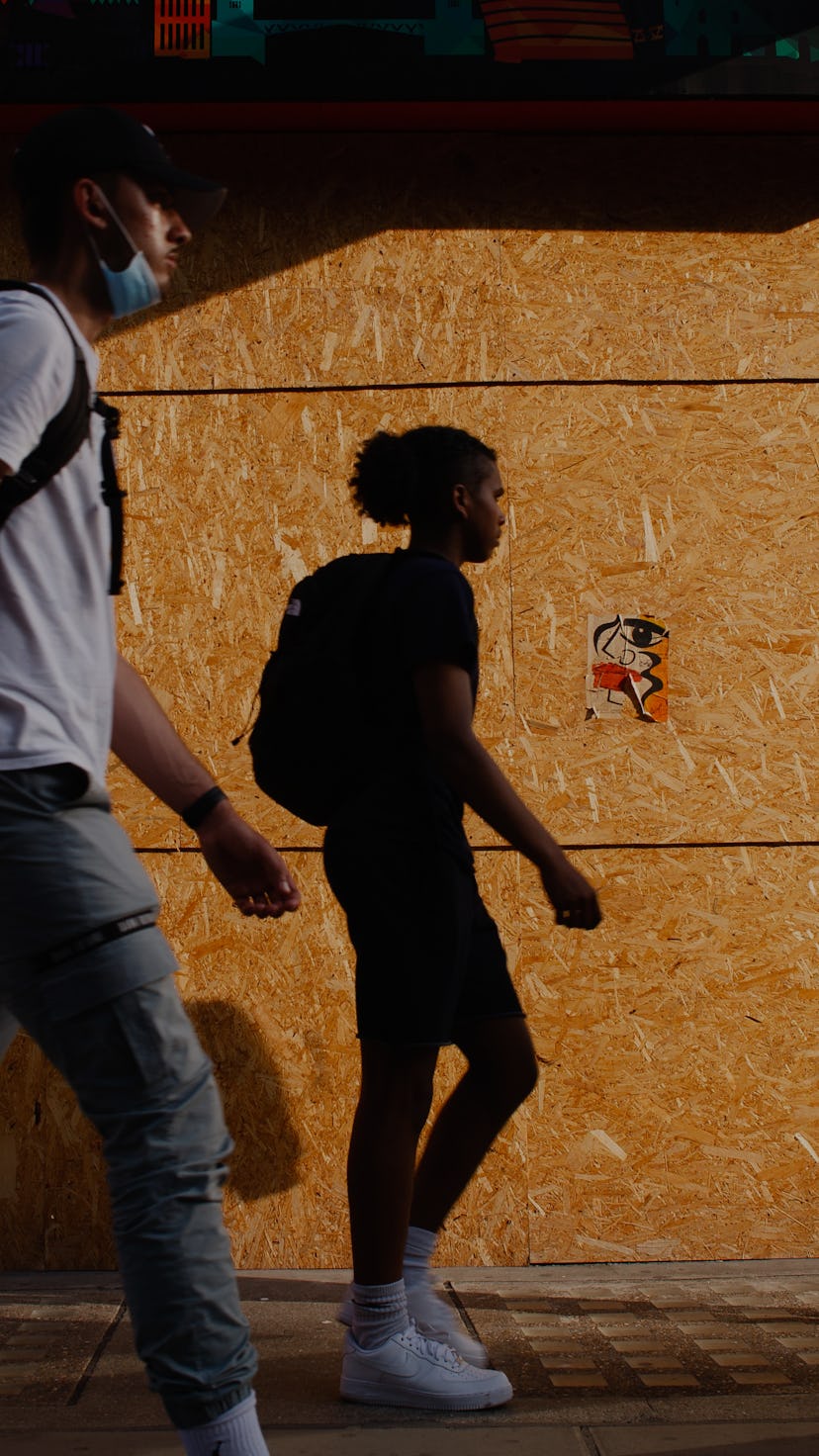In a chaotic year, boarded up storefronts became a symbol

When artist Sono Kuwayama emerged from her coronavirus quarantine in May, she noticed an influx of boarded up windows across her Lower East Side neighborhood. After 100 days in isolation, the historically vibrant community had become a plywood jungle. As a native New Yorker, she wanted to bring some beauty back to her city. Inspired by art she’d seen in other areas of the burrough, she began covering the plywood with colorful murals. Her first was a towering pink rose that hung outside her friend’s florist shop.
“I talked to all the store keepers that I could about what I wanted to do,” explained Kuwayama over the phone, adding that she doesn’t have a background in street art or murals. “I put a call out to a bunch of artists. By the next morning we had the first painter out.”
For months, plywood covered windows have been proliferating across the nation from Los Angeles to Washington D.C., causing lumber yards to report record sales. Initially the plywood went up after government mandated coronavirus lockdowns in March, but weeks later storefronts remained boarded up. As Kuwayama shared, many of the businesses she painted were damaged during the protests demanding justice for George Floyd. While the nationwide gatherings were largely peaceful, in late May and early June an estimated 450 city storefronts were looted or vandalized in New York City.
With the contentious election nearing, the fear of “political unrest” continued well past the protests. By the time the election came, hundreds of more buildings had boarded up, from drug stores like CVS to luxury retailers like Louis Vuitton.
“When the storefronts boarded up again because of the election, it was especially sad because it was a picture of our democracy—fear gripping at us and the need to protect after three-and-a-half years of deceit and hate mongering,” Kuwayama said.
Boarded-up windows usually come and go in cities, but the permanence we’ve seen this year speaks to the dire divisions present in the U.S. Even some stores that opened chose to keep the boards on their windows, a symbol of the uncertainty that has loomed over all of us. Several boards designed by Kuwayama and her army of over 20 artists still hang about, months after they first went up. And with the pandemic, economic uncertainty, and Trump’s refusal to concede still raging on, there’s no telling when they’ll come down.
“The elections are not going to solve all of our problems and bring us into complete agreement about how to address the very real challenges we are all facing right now,” said Professor Susan D. Hyde, a professor of political science at University of California, Berkeley. “Even if the boarded-up streets are kind of dystopian, we are living through something like that. There is a pandemic on a global scale, wide-spread economic suffering, and incredible political polarization all mixed together.”
These issues plaguing the nation were often reflected on the boards themselves. Whether it was by Kuwayama and her team, or the hundreds of other creatives who set out to paint the plywood in their cities across the US. In Austin, a neon mural reads “Hope is stronger than fear,” while “BLM” is emblazoned in bright spray paint in Chicago. In August, the Howl! Gallery in New York exhibited several of the early plywood works that Kuwayama and her fellow creatives made. As it described in the notes for the exhibit Bringing Back Bowery: Public Art as Protest, the art had become symbolic of “our collective mourning, our outrage, and our plea for change.”
As we approach the holidays, some storefronts around the country remain covered, leaving residents wondering when their communities will stop looking like a set from a horror film. Even for the retailers that have finally removed plywood boards from their windows, it could only be a matter of time before they go up again.